Museums, Theaters, Architecture, Ostrava
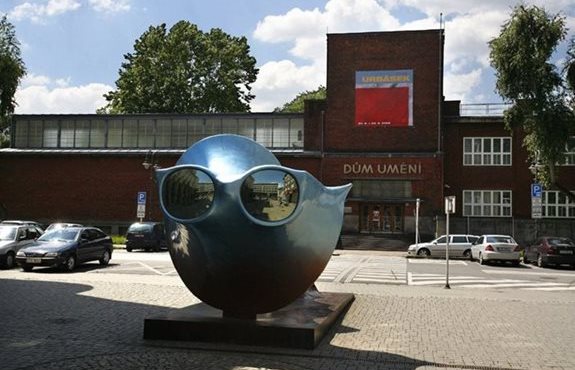
Removed from Unnamed collection
Gallery of Fine Art in Ostrava 
Come and meet with beauty and have a rest from the bustle of the industrial city. You will see works by old masters such as Dürer, Cranach, Aachen and Hollar. http://www.czechtourism.com/c/ostrava-art-gallery/
Map
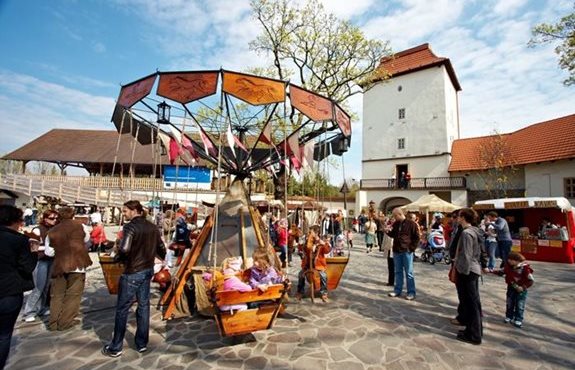
Removed from Unnamed collection
Silesian Ostrava Castle 
A medieval monument in an industrial city – Silesian Ostrava Castle.Valuable historical monuments can be seen even in the industrial city of Ostrava. http://www.czechtourism.com/c/ostrava-slezskoostravsky-castle/
Map
Explore more places related to this search:

Removed from Unnamed collection
Comenius Museum 
The Museum of Jan Amos Comenius in Přerov is the oldest museum of its kind in the world. Located in a Renaissance chateau, it presents collections of minerals, reconstructions of school classrooms from the 17th century up to the 1950s and ethnographic exhibitions of the Haná region. https://www.strednimorava-tourism.cz/en/destination/muzeum-komenskeho
Map

Removed from Unnamed collection
3 Maja Street 
3 Maja Street (former paniaga) is one of the oldest and prettiest streets downtown. An elegant promenade of our city, a place of family and friendly meetings. This oldest city route was created shortly after Rzeszów was granted city rights (in 1354). He connected the headquarters of the then owners of the city (the area of the later built Lubomirski Castle) with the Parish Church and the Bernardine Fathers' Monastery. It begins at Farny Square and the intersection with Kościuszki Street, and ends at the branch where the Lubomirskich Avenue and Zamkowa Street start. The current street name was given to it in 1891 on the occasion of the centenary of the 3rd May Constitution. Initially it was Zamkowa Street, then Pijarska Street, then Pańska Street, it was called Paniaga in the dialect of Rzeszów.
In the buildings on the east side of the street behind the building of the "Galeria Paniaga", a large section of the street is occupied by the frontage of the complex of the former Piarist convent, and then two banking buildings. A statue of Stanisław Konarski, unveiled in 1989, by Kazimierz Mierczyński is standing in front of the building of the former college, now I LO. The buildings on the west side of the street, from Farny Square, are opened by a corner tenement house No. 2 built around 1840, which once housed the printing house and the first Andrzej Pelar bookstore in Rzeszów. Further, behind the branch of Jagiellońska Street, there are two stately Art Nouveau tenement houses. http://www.rzeszow.pl/miasto-rzeszow/historia/zabytki-rzeszowa/ulica-3-maja
Map

Removed from Unnamed collection
Katowice St. Mary's Church 
Katowice's oldest existing Catholic parish church was built from Silesian dolomite, not the usual red brick, between 1862 and 1870 to a design by the famous Breslau (Wrocław) architect Alexis Langer. Originally planned on a far grander scale than it was eventually built, the 43m-long, 31m-wide neo-Gothic building features an eye-catching, trademark Langer 71m octagonal tower and a feast of good things inside. The altar in the transept supposedly dates from the 15th century, whilst the wonderful stained glass windows on either side of the nave representing sin and virtue are the work of Adam Bunsch (1896-1969). The Chapel of the Holy Sacrament includes a likeness of Father Emil Szramek in traditional Silesian dress. Szramek was the parish priest from 1926 until his arrest by the Gestapo in April 1940. Sent to a number of concentration camps including Dachau, where he quickly became a spiritual leader for other incarcerated Silesian priests, he was murdered on January 13, 1942. https://www.inyourpocket.com/katowice/st-marys-church_32645v
Map
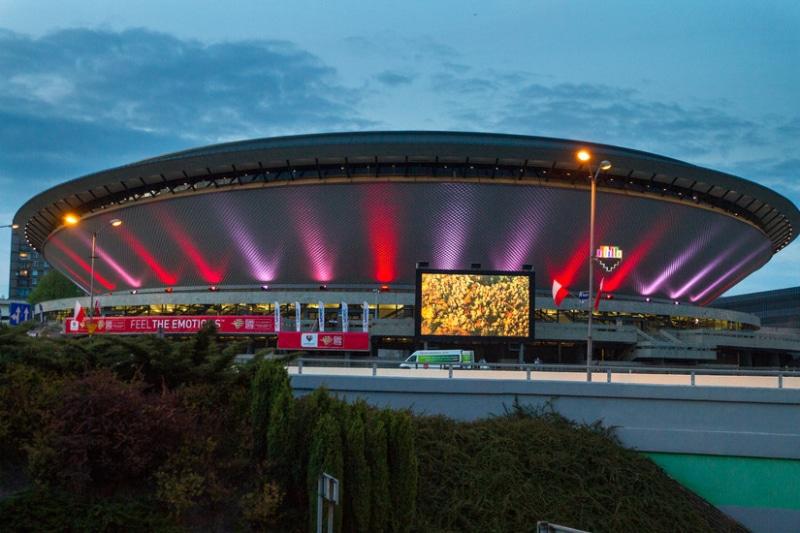
Removed from Unnamed collection
Spodek 
If you get to the brand new sparkling Rynek and see a strange unidentified lying object at the end of Al. Korfantego, the odds are you're looking at Katowice's very own flying saucer! This multipurpose 'space age' sports and concert venue has a rather colourful history as you might expect and has the ability to play space tunes whenever the lights go on. https://www.inyourpocket.com/katowice/spodek_32246v
Map

Removed from Unnamed collection
Silesian Museum 
The grand opening of the brand new home of the Silesian Museum is perhaps the biggest of all of Katowice's recent investment unveilings. The museum’s scope, the quality of the permanent exhibitions and the architectural prowess of the newly adapted subterranean chambers are all equally impressive. https://www.inyourpocket.com/katowice/silesian-museum_137651v
Map

Removed from Unnamed collection
Olomouc castle 
You simply should not miss the Olomouc castle site situated on the Wenceslas Hill! Right here in 1306, the last Přemyslid, the Czech king Wenceslas III, was assassinated. You can admire the Bishop's Palace with its famous Romanesque windows, the gothic St. Wenceslas Cathedral, today the seat of the Archbishop of Olomouc, or the Archdiocesan Museum founded on the initiative of Pope John Paul II. http://tourism.olomouc.eu/sights/olomouc-castle/en
Map
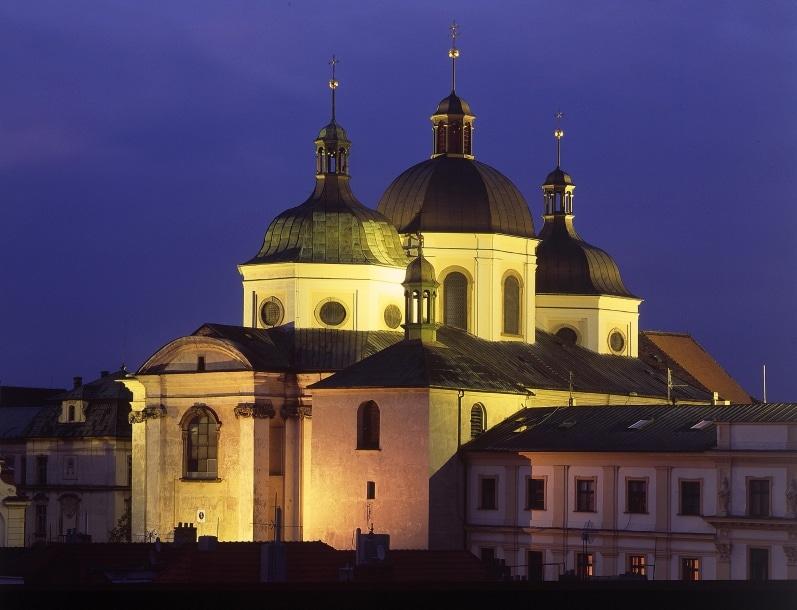
Removed from Unnamed collection
St. Michaels Church 
The three domes of the St. Michael’s Church are one of the most distinctive landmarks of the city. This Baroque church was rebuilt from the original Gothic church and was consecrated probably in 1251. http://tourism.olomouc.eu/sights/cathedrals-churches-and-chapels/detail=223/en
Map

Removed from Unnamed collection
Holy Trinity Column 
The Holy Trinity Column in Olomouc is the largest group of Baroque statues within a single sculptural monument in Central Europe.
The column reaches a height of 35 metres and its lower part houses a chapel. The sculptural decoration is made of 18 stone sculptures of saints, 12 light-bearers and 6 relief busts of the apostles. The column is dominated by gilded copper sculptures of the Holy Trinity on the top and the Assumption of the Virgin beneath it. The larger-than-life figures are enveloped in light, airy drapery with lively expressions on their faces and corresponding gesticulations of their hands. The overall sculptural decoration has a natural and harmonious appearance without being exaggerated in the typically flamboyant and exaggerated Baroque mode. http://tourism.olomouc.eu/sights/fountains-and-columns/detail=230/en
Map
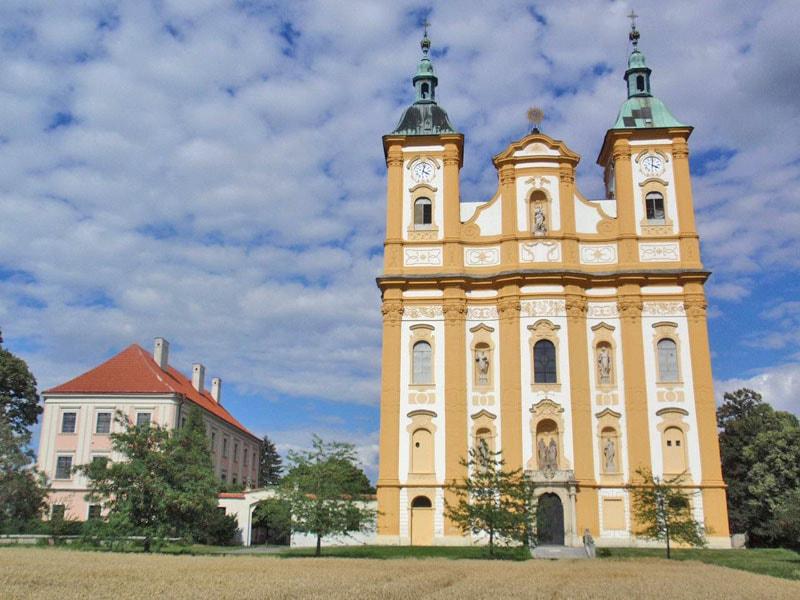
Removed from Unnamed collection
Dub nad Moravou 
Dub nad Moravou and the pilgrimage temple of the Purge of the Virgin Mary, which is dominated by the whole of Haná. The first mention of this Haná town is from 1141, when the settlement is mentioned as the property of the Olomouc capital church. http://www.ceskatelevize.cz/porady/1185264473-poutni-mista/308298380210004-dub-nad-moravou/
Map
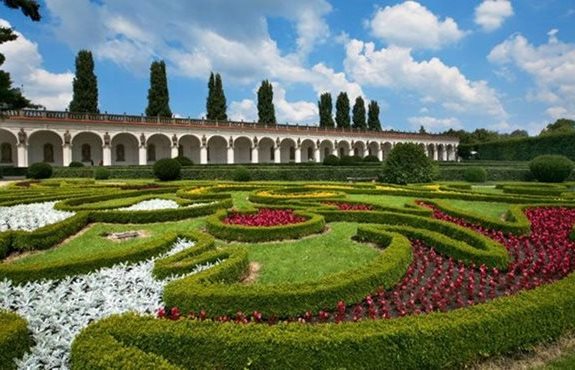
Removed from Unnamed collection
Kromeriz Gardens 
During the summer, Kroměříž is reminiscent of the Garden of Eden. The local gardens, which are included in the UNESCO world heritage list, represent a perfect symbiosis of light, plants, water, art and architecture. The Castle and Gardens are some of the most beautiful in Europe. http://www.czechtourism.com/c/kromeriz-unesco-gardens/
Map
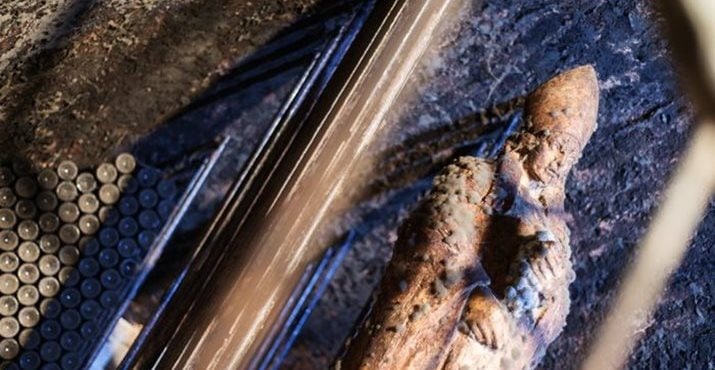
Removed from Unnamed collection
Archbishops cellars in Kromeriz 
One of the many noteworthy places in Kroměříž is without a doubt the Archbishop´s Chateau, which boasts beautiful interiors – a picture gallery of first-rate works by European painters and a Rococo assembly hall. http://www.czechtourism.com/c/kromeriz-archbishops-cellars/
Map

Removed from Unnamed collection
Church of St. Anthony of Padua 
The conventuals (black friars) settled in Poznań in the 17th c. The church was commissioned from Jan Koński and built atop Castle Hill (presently Przemysł Hill) in the years 1674-1757. The monastery was erected in the years 1672-1749 east of the church but it was partly dismantled after the suppression of the order in 1834; only the north part survived to the present day. http://www.poznan.pl/mim/turystyka/en/church-of-st-anthony-of-padua,poi,2471/church-of-st-anthony-of-padua,39371.html
Map

Removed from Unnamed collection
The Wawel Cathedral 
It’s Poland’s Westminster Cathedral, the absolute focal point of the country’s religious history, crowning place of kings and queens and architectural overseer of the famous Cracovian gothic skyline. Wawel Cathedral sits in the heart of the royal palace and castle complex that dominates the hill of the same name, on the south side of Krakow’s old town. http://visitkrakow.com/city/the-wawel-cathedral/
Map
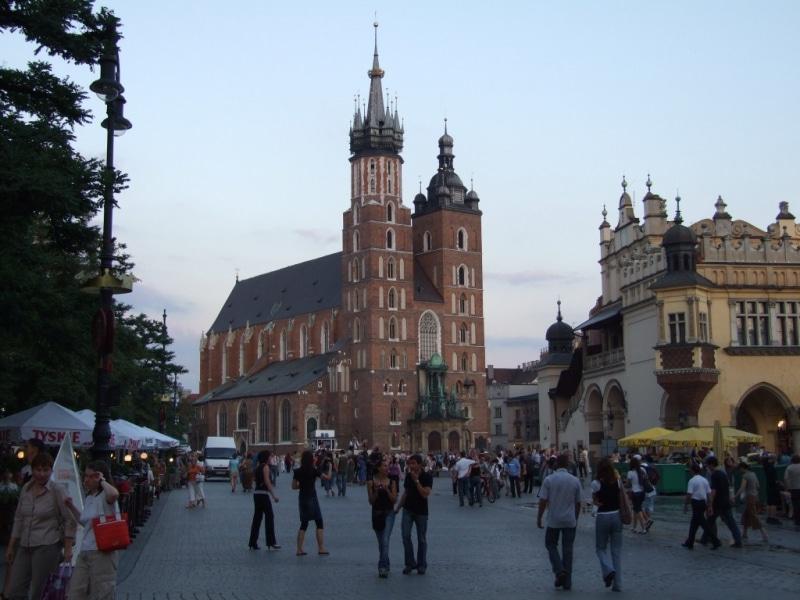
Removed from Unnamed collection
St. Marys Basilica 
Keeping watch over Europe’s second largest market square for the last seven centuries, the imposing Gothic spires of St. Mary’s Basilica have become a veritable symbol of Kraków itself and a focal point in the stories that make up the city’s mythic and historical past. http://visitkrakow.com/city/st-marys-basilica/
Map

Removed from Unnamed collection
Florianska Street 
This is where the action happens, so to speak. All year round, the cobbled, pedestrian surface of Floriańska Street is the théâtre de l’action of the city, and the venae cavae to Kraków’s massive central square. It’s something of a modern stage for the unending drama of the city’s Old Town, where the players are tourists and locals alike, and the set pieces are the magnificent medieval façades of some of the most prestigious buildings in the city. http://visitkrakow.com/city/florianska-street/
Map
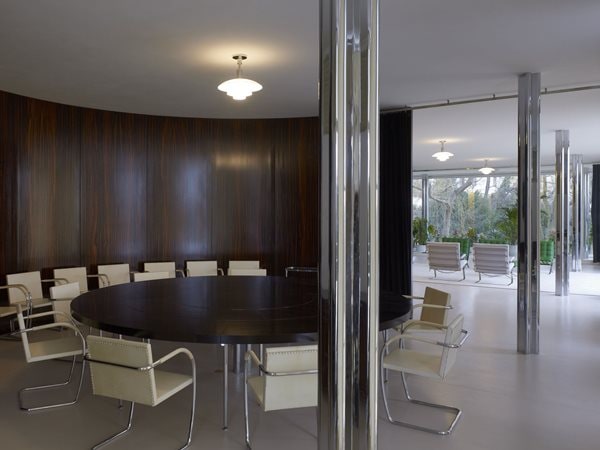
Removed from Unnamed collection
Villa Tugendhat 
Villa Tugendhat has borne witness to the birth of modern housing and also to the tragic fate of the people who lived there. This work by the famous German architect Mies van der Rohe is to this very day regarded as one of the four most important villas in the world. Thanks to its values, this gem of modern architecture has also been included in the UNESCO world heritage list. http://www.czechtourism.com/c/brno-unesco-tugendhat-villa/
Map
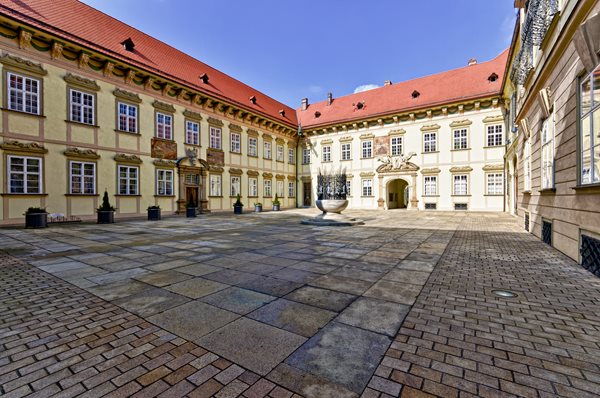
Removed from Unnamed collection
Old Town Hall in Brno 
The Brno Dragon and Brno Wheel are well-known symbols of the city and are linked with several legends. You can only see them with your own eyes in the building of the former Town Hall in the Moravian Capital near to Zelný trh. http://www.czechtourism.com/c/brno-old-town-hall/
Map
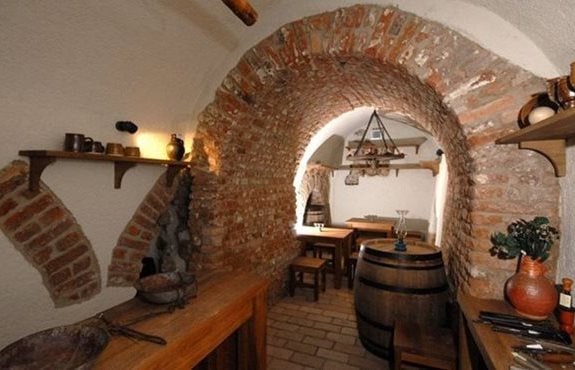
Removed from Unnamed collection
Brno underground 
Proof of the fact that the Moravian capital still has its secrets, is the newly renovated Brno underground under Zelný trh. It was only recently that a tour route was opened here for the general public, which leads under the surface of one of the oldest squares in Brno. http://www.czechtourism.com/c/brno-underground/
Map
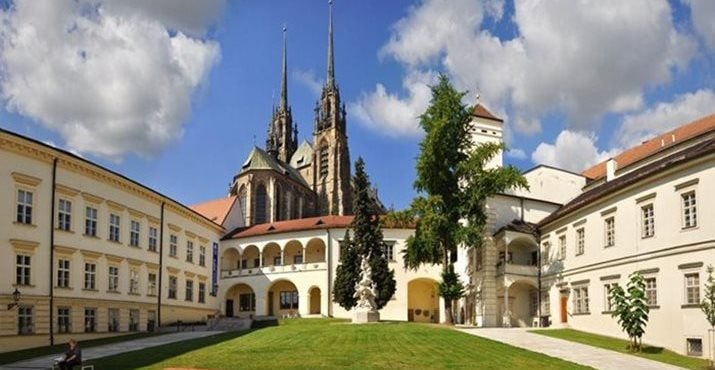
Removed from Unnamed collection
Moravian Museum 
The museum was created back in 1817 by means of an imperial decree by František I, and nowadays it contains over six million items. Take a closer look at prehistoric life in Pavilon Anthropos where you will see a life-size mammoth and all the things a prehistoric family had to face. http://www.czechtourism.com/c/brno-moravian-museum/
Map
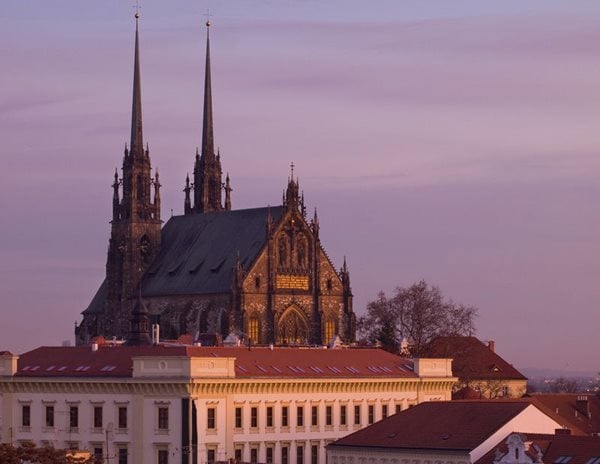
Removed from Unnamed collection
Cathedral of St. Peter and Paul 
Once a small Romanesque Basilica on Petrov Hill, later rebuilt in the Gothic style, the cathedral was built in 1777 after the Brno bishopric was created. Now its two tall towers, together with Špilberk Castle , form the characteristic silhouette of the city of Brno. In addition to the interior, the Romanesque-Gothic crypt and view from the two towers are a must. The Diocesan Museum and Information Centre is located nearby. The noon ringing at 11 o’clock is part of the legend of the Swedish siege during the Thirty Years War. http://www.czechtourism.com/c/brno-st-peter-and-pauls-cathedral/
Map
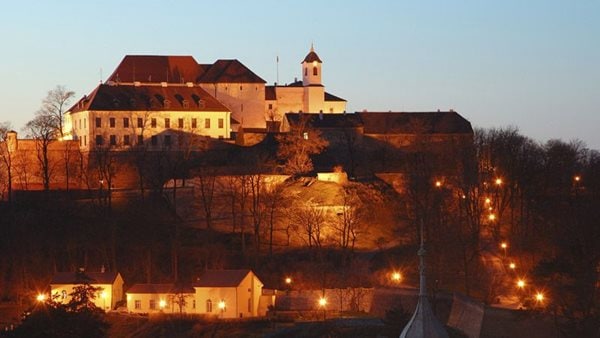
Removed from Unnamed collection
Spilberk Castle 
A prison shrouded in horrific legends, valuable historical collections, a beautiful view over the city and many cultural events held throughout the year – all of this is Špilberk Castle. One of the two most important dominant features of the Moravian capital and a place which became synonymous with the most horrific of dungeons throughout the whole of Europe is nowadays one of the most valuable monuments in Brno.
Špilberk’s importance and role changed fundamentally over the course of the centuries. This leading royal castle and seat of the Moravian margraves, gradually transformed into a monumental Baroque fortress, the toughest prison of the Austrian monarchy and later a military barracks. Nowadays it is home to Brno City Museum and one of the most important cultural centres in the city. http://www.czechtourism.com/c/spilberk-castle/
Map

Removed from Unnamed collection
Veveri Castle 
The castle was held in possession of various noblemen and its history is interwoven with a number of myths and legends. Today it is a venue of various cultural and social events. At the foot of the castle there is a steamboat stop. http://www.czechtourism.com/c/brno-veveri-castle/
Map
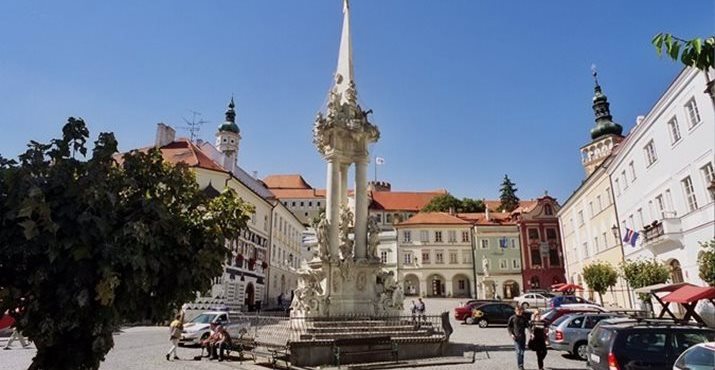
Removed from Unnamed collection
Mikulov Historic Market Square 
The great fire of the original wooden houses in 1584 gave rise to Mikulov square in its present form. Part of the square, which is also the entrance to Mikulov Castle, is formed by houses with a Renaissance core and picturesque arcades.
Probably the most interesting of the Renaissance buildings is the bourgeois Knights’ House (dům U Rytířů), which was created after the rebuilding of several Gothic buildings in the second half of the 16th century. At first glance, you can not overlook it on the square due to its sgraffito decoration with biblical and ancient scenes covering two-thirds of the house. The painting draws attention to the fact that it was originally a two-story house. Another feature of the square is the statue of the Holy Trinity, in addition to showing the Trinity it also displays angels that symbolize faith, hope and love. The column is complemented by statues of St. John of Nepomuk, St. Francis Xavier and Charles Borromeo, who were supposed to protect the inhabitants of the city from the plague. The Plague Column was built during the reign of the Dietrichsteins in 1724. http://www.czechtourism.com/a/mikulov-historic-market-square/
Map
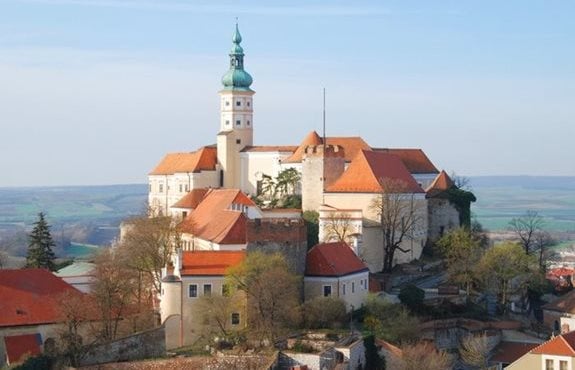
Removed from Unnamed collection
Mikulov Castle 
One of the most picturesque castles in Moravia. The silhouette of this monumental castle in South Moravia is visible from afar. In its time it has played host to a number of important personalities, such as French Emperor Napoleon Bonaparte. http://www.czechtourism.com/c/mikulov-castle/
Map
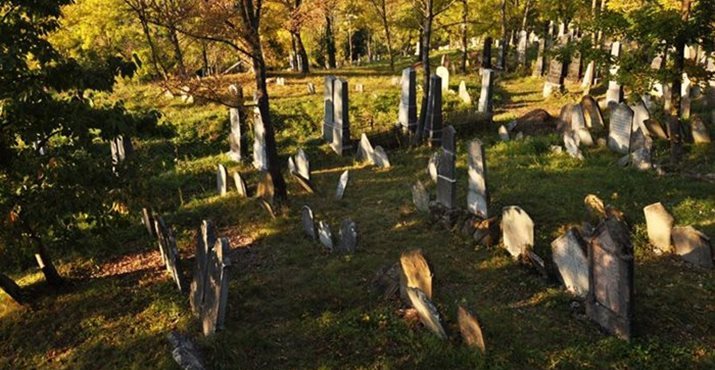
Removed from Unnamed collection
Museum of the Jewish Community 
In the footsteps of the Golem to the Jewish Museum in Mikulov. For centuries Mikulov was a major Jewish centre in Moravia. This means their heritage is still very much an on-going concern. Come and visit the local museum and reveal the turbulent fate of the Jewish population, one which produced Rabbi Löw, a figure enveloped in myths and legends. http://www.czechtourism.com/c/mikulov-jewish-museum/
Map
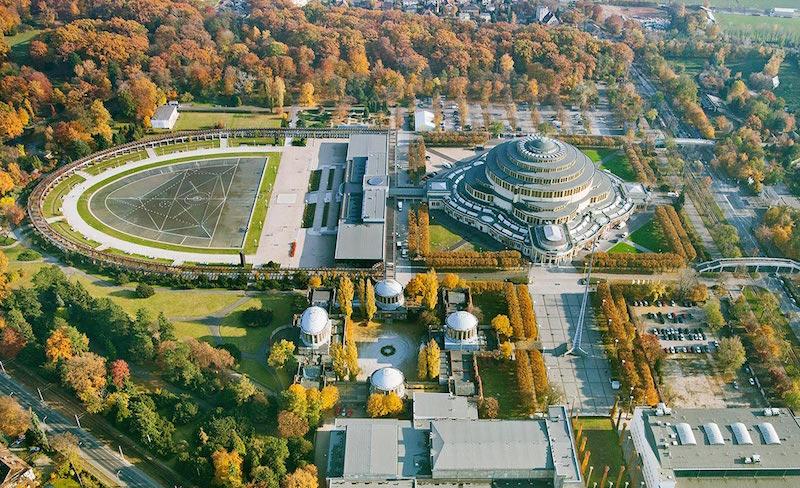
Removed from Unnamed collection
Centennial Hall 
Centennial Hall was recognised as one of the greatest architectonic achievements of the 20th century. It was designed to serve the citizens of Wrocław and the guests visiting the capital of Lower Silesia. https://visitwroclaw.eu/en/place/centennial-hall
Map
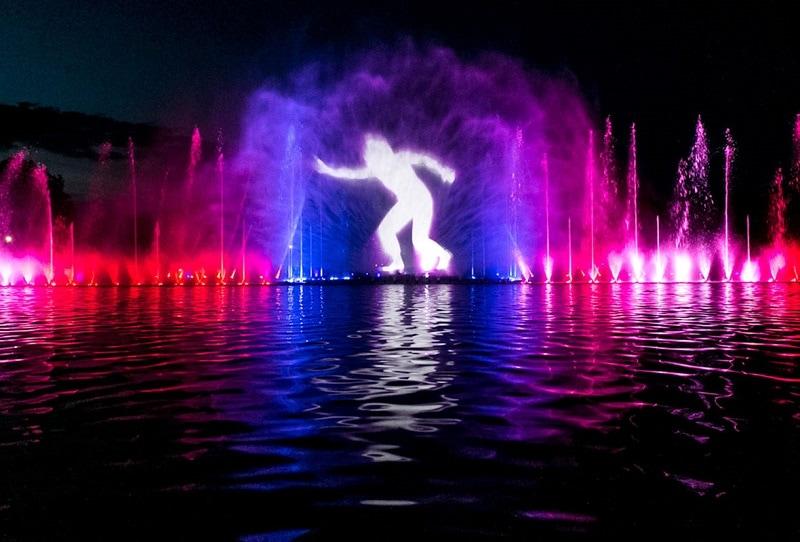
Removed from Unnamed collection
Wroclaw Multimedia Fountain 
Wrocław Multimedia Fountain (Wrocławska Fontanna Multimedialna) is the biggest fountain in Poland and one of the biggest in Europe. It was initiated on 4th June 2009 on the occasion of the 20th anniversary of the first free elections in the postwar Poland. Located in the beautiful Szczytnicki Park, near the Centennial Hall and Wrocław Congress Centre, attracts many Polish and foreign tourists. https://visitwroclaw.eu/en/place/wroclaw-multimedia-fountain
Map
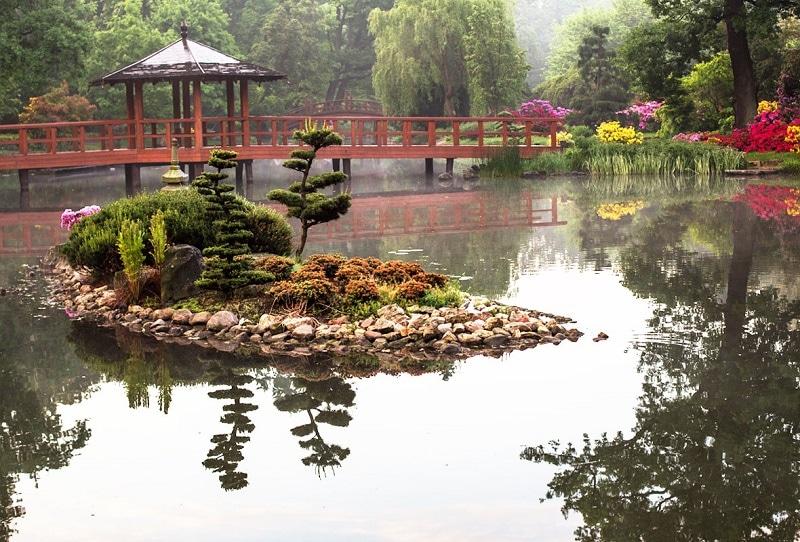
Removed from Unnamed collection
Wroclaw Japanese Garden 
It is one of the most popular places for walks. Apart from a few hundreds of original plants, trees, bushes and flowers, there are also Japanese buildings: the gate and the tea pavilion.
One of the attractions of the Garden is a pond with enormous carps and other species of fish. The Garden often hosts events like tea perking, concerts and open-air happenings.
The Japanese Garden was created in the beginning of the 20th century, on the occasion of the Global Exhibition in 1913. It was an initiative of count Fritz von Hochberg, who employed a Japanese gardener Mankichi Arai. After the Exhibition it was dismantled but the plants and the arrangement of alleys and the pond remained the same.
The idea of renewing the Japanese Garden in Wrocław appeared in the 90s. The reconstruction lasted three years, the specialists from Japan came to assist, but the Garden did not survived for long. Two months after the inauguration, the Garden was destroyed by the flood. 70% of the plants were lost. The next opening of the Japanese enclave took place in October 1999. https://visitwroclaw.eu/en/place/japanese-garden-wroclaw
Map
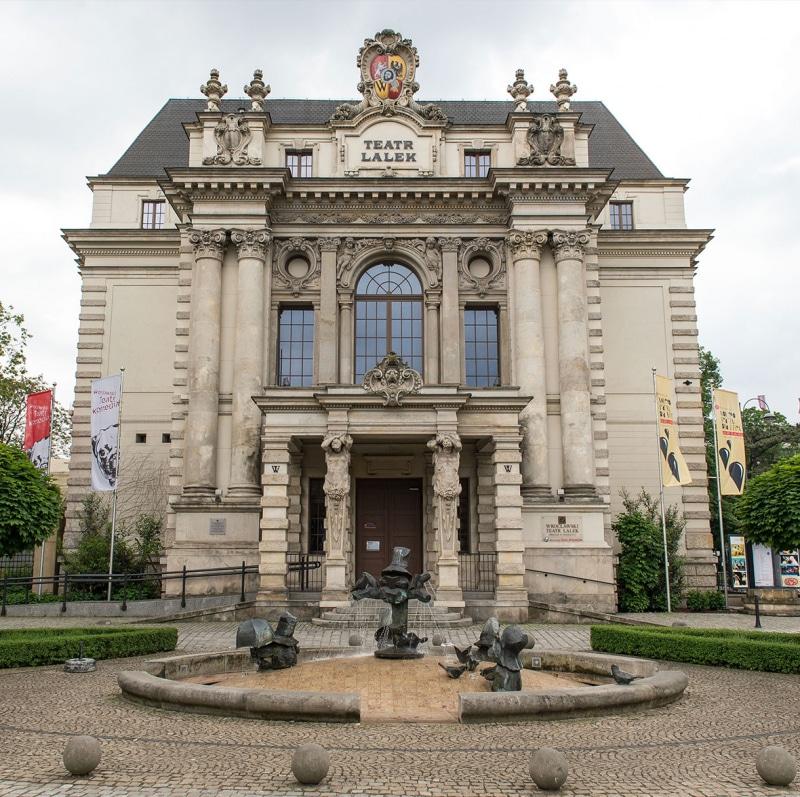
Removed from Unnamed collection
Wroclaw Puppet Theatre 
Wrocław Puppet Theatre presents adaptations of children literature (Astrid Lindgren’s “Och, Emil”, Piotr Jerszow’s “Konik Garbusek”) and classic fairy tales - Beauty and the Beast, Red Riding Hood, Cinderella, Puss in Boots. But the Theatre plays not only classics - the latest premieres were mainly original spectacles based on contemporary plays, written especially for Wrocław Puppet Theatre. These are new, highly educational plays, which cross the borders of a regular puppet theatre. https://visitwroclaw.eu/en/place/wroclaw-puppet-theatre
Map

Removed from Unnamed collection
Raclawice Panorama 
The painting present the Battle of Racławice in April 1794, in which Poles won over Russians. The monumental picture is 114m long and 15m high.
It was the idea of Jan Styka, a painter from Lvov, who invited among others Wojciech Kossak, Tadeusz Popiel, Teodor Axentowicz, Włodzimierz Tetmajer to work on the painting.
The work took 9 months to finish. A rotunda with Panorama of the Battle of Racławice (Panorama Racławicka), built in Stryjeński Park, became one of the attractions of Lvov.
The technology applied by the authors can be compared to the contemporary 3D technology. Special, panoramic perspective, lighting and scenography constructed in front of the picture make it look multidimensional.
During the visit, the viewers can listen to the history of the painting and the events presented in 16 languages (including Korean, Japanese, Croatian and Esperanto). For blind people there is an audio description available. https://visitwroclaw.eu/en/place/panorama-raclawicka-wroclaw
Map
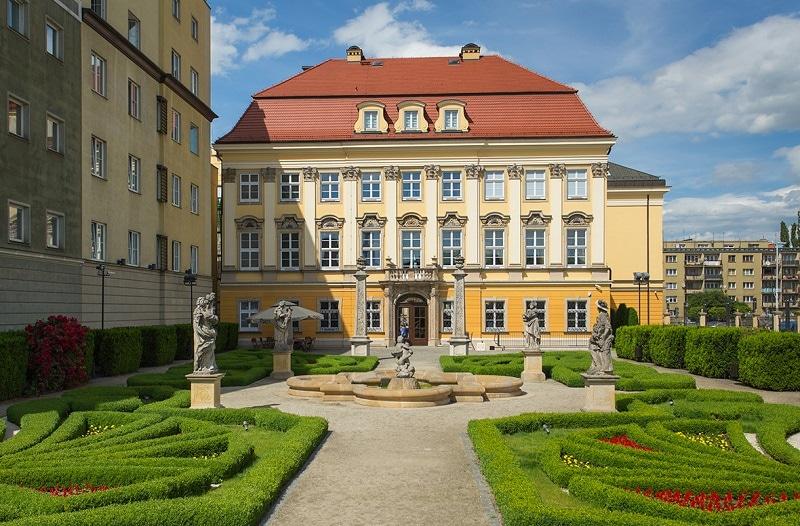
Removed from Unnamed collection
Wroclaw Royal Palace 
From 2009 the palace is the main building of the City Museum of Wrocław and presents, among others the exhibition “1000 years of Wrocław”.
The Royal Palace (Pałac Królewski) was called Spaetgen’s Palace, from the name of one of the first owners. In 1717 baron Heinrich G. Spaetgen bought a small baroque mansion close to Rynek. After his death in 1750, a Prussian King Frederick II bought the palace. It became a royal mansion, and Wrocław joined Berlin and Königsberg (today’s Kaliningrad) as a residence city.
The next Prussian kings extended the palace, changed its design and character. In the middle of the 19th century the palace extended itself from Wolności Square to Kazimierza Wielkiego Street. After the fall of the empire the palace was taken by the city authorities, in the 20s the Palace Museum was opened. During World War II the building was seriously damaged. https://visitwroclaw.eu/en/place/royal-palace-historical-museum
Map

Removed from Unnamed collection
Ostrow Tumski 
Surrounded by the river Oder, the old burgh, the origin of the city, has fantastic architecture. The greatest ones are the Gothic St. John Baptist cathedral, rebuilt after World War II and Holy Cross church. https://visitwroclaw.eu/en/place/ostrow-tumski-en
Map
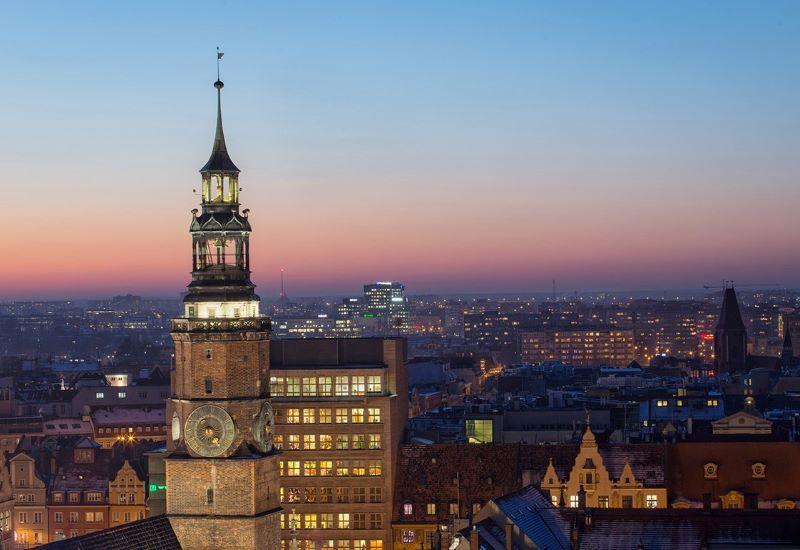
Removed from Unnamed collection
Wroclaw Old Town Hall 
Old Town Hall is a unique Gothic building in European architecture. It has 2 storeys, 3 parts with a rectangular building of the councils, which is attached to the northern wall and a square tower. Located in the city centre, it was being built for about 250 years (13 - 16th century). It used to serve as the seat of the city authorities and the court.
The oldest part of the Town Hall was built ca. 1299 (according to the sources). This part is called consistorium (Latin: place of gatherings) and now belongs to the building. The consistorium has two parts: the underground hall covered with the ceiling and the Western tower. After buying the rights of the voyt, the meaning of the Council was much bigger. The growing number of the Council members demanded a new building. In the years 1328-1333, near the consistorium a new, smaller building was built - praetorium (Latin: the seat of the leaders). The building is the northern part of the Town Hall, near the square with the whipping post.
Since the very beginning the Town Hall has witnessed many important historical events and has been a representative building where the authorities invited their honourable guests. This tradition is still alive. The most important world leaders, monarchs, clergy and artists have been invited into the Town Hall. In the cellar of the building there is one of the oldest restaurants in Europe - the legendary Piwnica Świdnicka. https://visitwroclaw.eu/en/place/old-town-hall-in-wroclaw
Map


